Have you ever walked into a room and noticed how every sound seemed to bounce off the walls, creating an echo chamber of distractions?
The solution to this auditory chaos might be simpler than you think: acoustic panels. But not just any acoustic panels.
The construction of these panels, particularly the role of wood frames, can make a world of difference.
This comprehensive guide dives deep into the pivotal role that wood frames play in fabric-wrapped acoustic panels.
We’ll explore their importance in both the structural integrity and aesthetic possibilities of the panels, as well as whether they have any impact on acoustic performance.
And for those looking for alternatives, we’ll also touch on the benefits of switching to polyester acoustic panels.
So, whether you’re an audio professional or just someone looking to improve your living space, we’ve got you covered.
Let’s dive into the fascinating world of acoustic panels and the often overlooked but crucial role of wood frames.
What Role Do Wood Frames Play In Fabric-Wrapped Acoustic Panels?
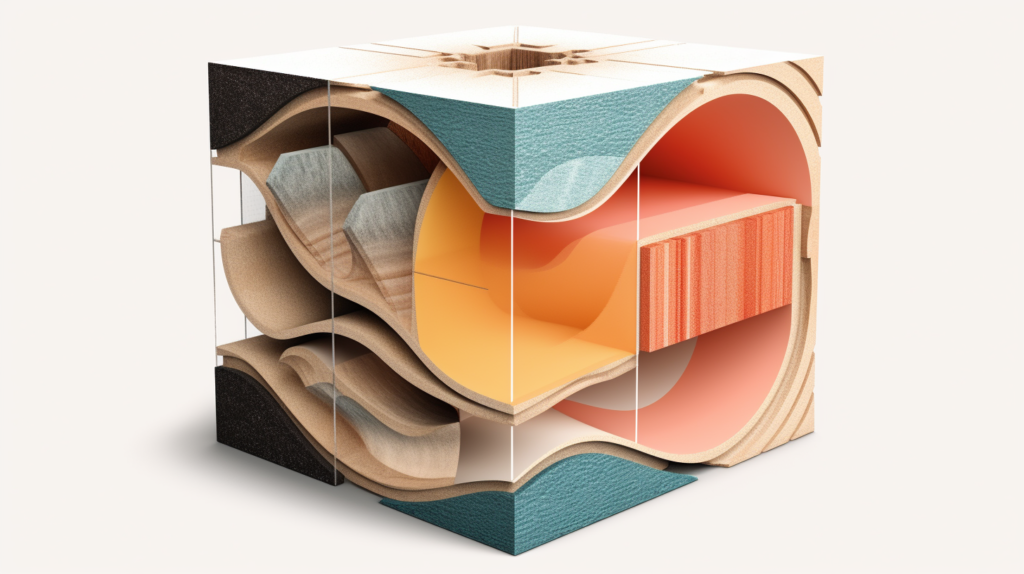
When we talk about fabric-wrapped acoustic panels, the role of wood frames can’t be overstated.
These frames serve as the foundational skeleton for the fabric and acoustic material, providing a sturdy base upon which the panel is built.
In the world of acoustic panels, fabric-wrapped options are frequently favored for their effectiveness in sound absorption.
Combining fabric, acoustic material, and a wood frame creates a highly efficient sound absorption tool that’s applicable in a variety of settings.
From professional recording studios to corporate office spaces and home theaters, fabric-wrapped acoustic panels are a go-to choice for sound treatment.
In all of these applications, the wood frame is a critical component, serving a dual purpose: it not only offers structural integrity but also opens the door to various aesthetic possibilities.
How Does A Wood Frame Provide Structural Integrity?

If you liken a fabric-wrapped acoustic panel to the human body, the wood frame would be the skeleton.
It offers the rigidity and structure that help to keep the panel’s shape intact over time, ensuring its durability and long-term effectiveness.
This function of providing structure becomes even more critical when we talk about larger panels.
Without a sturdy frame, these panels could suffer from sagging, warping, or other deformities that not only affect their aesthetic appeal but also potentially compromise their performance in absorbing sound.
Furthermore, a solid wood frame ensures that the acoustic material within the panel is held securely in its place.
Any shift in this material could result in inconsistent sound absorption across the panel, thereby affecting its effectiveness in treating sound issues.
Another point to consider is that the wood frame helps facilitate the installation process.
A well-constructed frame can make mounting the panel on a wall or ceiling much easier, thereby reducing labor costs and installation time.
Can Wood Frames Add Aesthetic Value To Acoustic Panels?
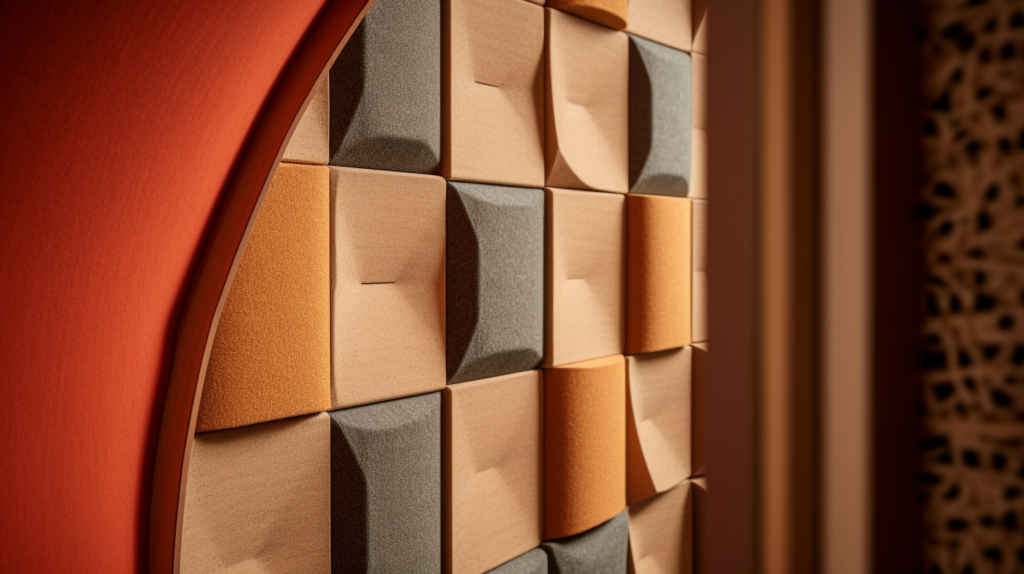
While wood frames offer a range of aesthetic possibilities for fabric-wrapped acoustic panels, it’s important to note that these frames are often completely covered by fabric.
In such cases, the aesthetic value of the wood frame becomes a non-issue, as it’s not visible in the finished product.
However, the choice of wood can still play a role in the overall construction quality of the panel.
Higher quality woods may offer better structural integrity, which indirectly could affect the panel’s appearance by preventing warping or sagging over time.
Also, while the frame itself may be covered, the craftsmanship involved in creating a well-constructed frame can still have subtle effects on the panel’s appearance.
A poorly constructed frame might not hold the fabric as tautly, which could result in a less-than-perfect finish.
So, while the wood frame may not directly contribute to the aesthetic value when covered by fabric, its quality and construction still play a role in the final appearance of the panel.
Therefore, even if the frame won’t be visible, it’s worth investing in quality materials and construction for the best possible outcome.
Do Wood Frames Affect The Acoustic Performance Of Panels?
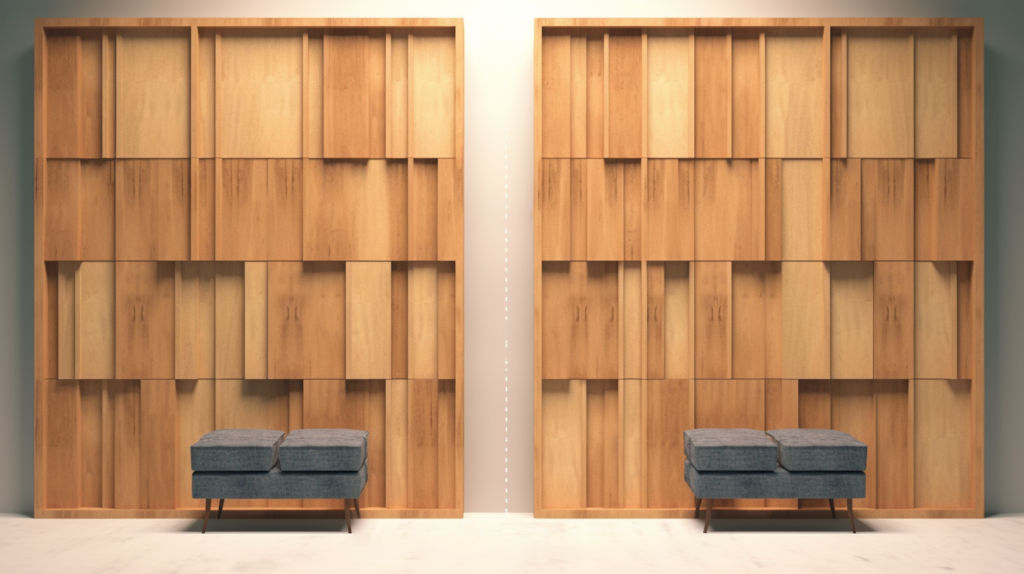
When considering the use of wood frames in acoustic panels, a question that naturally arises is whether these frames have any impact on the panels’ acoustic effectiveness.
After substantial research and various acoustic tests, the consensus in the field is that wood frames have a negligible effect on a panel’s sound-absorbing capabilities.
This might seem counterintuitive to some, especially those who wonder if the solid structure of the wood frame could potentially reflect sound waves.
However, acoustic testing shows that any such effects are minimal and often statistically insignificant.
It’s important to note that while the wood frame itself does not contribute to sound absorption, its role in holding the acoustic material in place is crucial for consistent performance.
A well-constructed frame ensures that the material does not shift or sag, which could otherwise result in uneven sound absorption across the panel.
The fact that the frame does not significantly impact acoustic performance means you have greater freedom in choosing a frame based on other factors.
These can range from aesthetic considerations to durability and ease of installation, without worrying about compromising on sound quality.
What Is The NRC Coefficient And Why Is It Important?
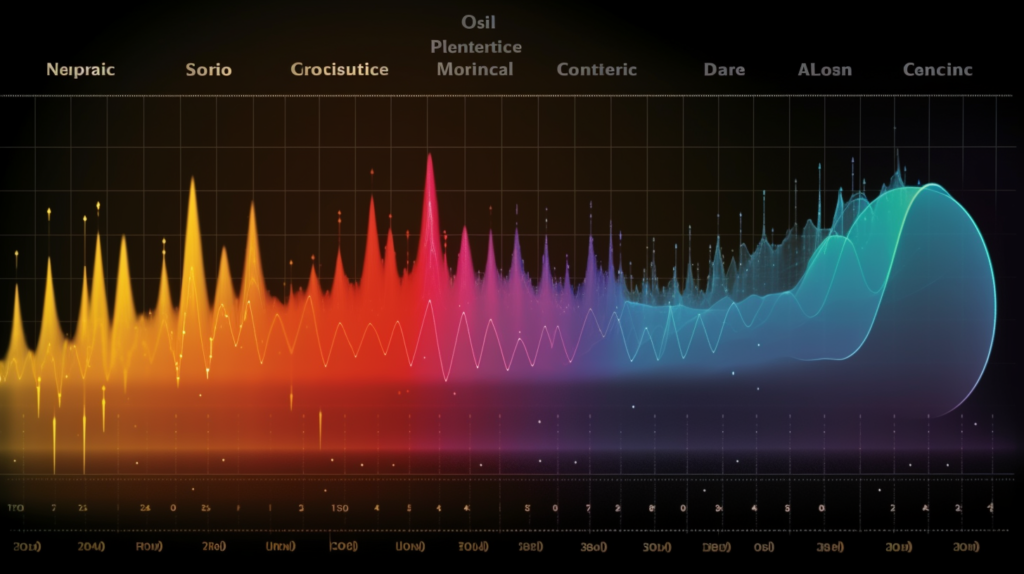
The Noise Reduction Coefficient, commonly known as NRC, is a standardized measure used to evaluate how well a material absorbs sound.
NRC values range from 0 to 1, with higher values indicating superior sound absorption. For example, an NRC of 0.5 means that the material absorbs 50% of sound energy striking its surface.
Understanding NRC is critical when it comes to choosing materials for sound treatment.
Whether you are a studio engineer looking for the best acoustic treatment for a recording space or a homeowner wanting to reduce noise in a living room, the NRC offers an objective metric for comparing different materials and products.
However, it’s worth remembering that NRC is not the be-all and end-all.
While it’s a crucial factor, other considerations like the specific frequency range you’re targeting or the panel’s intended application also matter.
It’s always a good idea to consult with acoustic experts to determine the best solution for your specific needs.
Is There A Difference In NRC Between Panels With And Without Wood Frames?
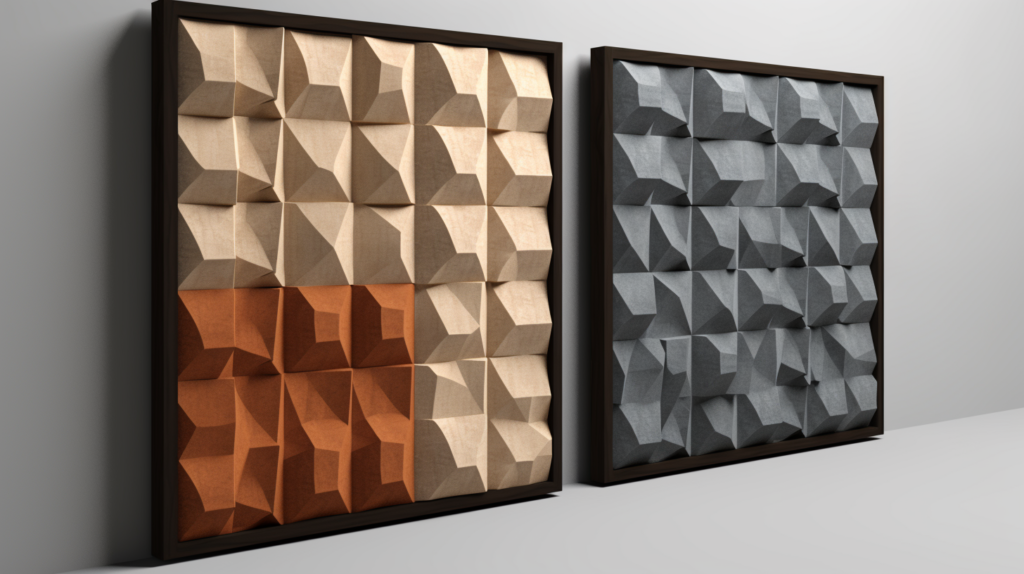
Multiple studies have been conducted to determine the impact, if any, of wood frames on the NRC of acoustic panels.
The findings consistently show that the presence or absence of a wood frame does not significantly affect the NRC value of the panel.
This conclusion has been verified across various types of acoustic materials, including foam, fiberglass, and polyester.
Whether framed or frameless, the NRC values remain largely consistent, affirming that the wood frame’s impact on acoustic performance is minimal.
Thus, when choosing between framed and frameless acoustic panels, your decision should not be swayed by concerns about NRC.
Instead, other factors like aesthetic appeal, structural integrity, and installation convenience should guide your choice.
Certainly, if you’re set on using frames but would like an alternative to wood, one option is to switch the material of the acoustic panels themselves to polyester.
Why Switch To Polyester Acoustic Panels?

Polyester acoustic panels are an increasingly popular choice for many reasons. First, they are made from recycled materials, making them a more sustainable option.
If environmental concerns are a priority, then polyester panels offer a greener alternative.
Moreover, polyester acoustic panels are known for their durability and resilience.
Unlike other materials that may degrade over time or are sensitive to environmental factors like humidity, polyester remains stable.
This stability ensures that the panels maintain their effectiveness in sound absorption over the long term.
Another notable advantage is the ease of maintenance.
Polyester acoustic panels are generally easier to clean and less likely to stain than other materials, making them ideal for settings like schools, hospitals, or commercial spaces where cleanliness is a priority.
Do Polyester Acoustic Panels Require Frames?

Interestingly, polyester acoustic panels often do not require framing that other materials might as it is heat-pressed.
The inherent rigidity and durability of polyester allow for more flexibility in installation methods.
In some cases, these panels can be installed without a frame, reducing material costs and simplifying the installation process.
However, if you prefer the finished look that a frame provides, polyester panels are compatible with framing options.
Just like with other materials, a frame can add a layer of aesthetic refinement, allowing the panels to better match the interior design of the space.
Conclusion
When it comes to fabric-wrapped acoustic panels, wood frames serve as an indispensable component, offering both structural integrity and potential aesthetic value.
While the wood frame’s aesthetic impact may be less visible due to the covering fabric, its contribution to the panel’s overall quality and durability remains significant.
On the acoustic performance front, wood frames have been shown to have a negligible effect, allowing you greater latitude in selecting frames based on other factors such as aesthetic preference and installation ease.
The Noise Reduction Coefficient (NRC) remains a critical measure for evaluating acoustic effectiveness, but it is not significantly influenced by the presence or absence of a wood frame.
For those seeking an alternative, polyester acoustic panels emerge as a compelling option.
These panels offer several advantages, including environmental sustainability, durability, and ease of maintenance.
Interestingly, the rigidity of polyester often eliminates the need for a frame, offering a different approach to acoustic treatment.
In summary, whether you opt for wood-framed fabric-wrapped panels or frameless polyester panels, each has its own set of advantages and considerations.
Your choice will ultimately depend on a variety of factors, including your specific acoustic needs, aesthetic preferences, and practical considerations like ease of installation and maintenance.
